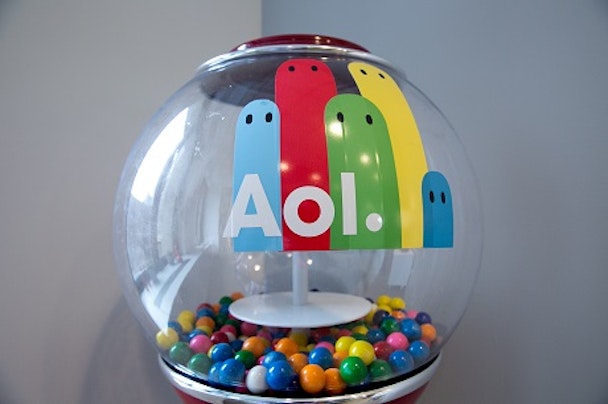AOL's department store of media is 'open' for business in renewed bid to challenge Facebook and Google
AOL is pitching itself to advertisers as a “department store for online media”. While bespoke services, VIP treatment and access to a plethora of products under one roof may be the hallmarks of Selfridges, AOL sees similarities in how it can be a one-stop shop to both create its own content for brands and then distribute it at scale.

It might be an odd analogy for an online media business but AOL UK needs to do all it can to convince advertisers it is worth their time and money over its larger rivals. Where the likes of Google and Facebook are viewed by many as unwilling to share data that’s hived off within their walled gardens, AOL sees itself as the complete opposite.
Closed systems don’t let advertisers compare apples with apples, so there’s no way for them to see how they perform on one channel versus another. When brands can make that comparison they can then compare the results of their ‘open buys’ on an objective basis, fostering a dynamic that gives the seller has the upper hand, not the buyer.
“Right now we have three floors,” explained Flint in reference to the department store analogy,” said Stuart Flint, managing director for AOL UK.
“There’s an audience floor where you could go to if you’re looking to access 15- to 34-year olds. We have that reach across a number of different platforms and understand how they all fit together so that we can deliver that audience for you. The second floor is for platforms, so advertisers would go there if they just wanted to buy into Xbox or Skype for example. Then the top floor is the ‘Partner Studio’ that’s all about bespoke projects, almost like our version of personal shopping where we can put your audience piece together but also the platform part and give you a holistic answer.”
The tricky question is how well Flint and his team integrate the various technology, data and ad network assets AOL has acquired over the last five years to deliver on that promise. This is what his department store analogy aims to prove, framing the sprawling business as an open store where the promise of a value exchange around data is used to get marketers through the doors. Part of those insights also come from how readers are consuming content on AOL-owned brands like The Huffington Post, Engadget and TechCrunch.
“Having brought the Microsoft and AOL businesses together, we’re able to overlay first party data from brands with our second party data and then add third party data into that mix. That’s the journey we’ve been on over the last three or four months,” Flint added.
“By having that layer of data management we’re able to compete on that [people-based targeting] level and really truly understand who our audiences are.”
An open ecosystem devoid of the attribution woes of other platforms sounds like marketing nirvana so why have advertisers been slow and in some cases apprehensive of the promises?
At a time when digital takes up one slice of the ever widening remit of a marketer, many would rather stick by the comfortable guarantees of Facebook and Google then try and get their heads around another massive ecosystem. Cost has also kept advertisers away in the past and there’s a sense from some agencies that the pitch of one open platform sounds too good to be true.
“One open platform is a great pitch, but tough to deliver on - especially after so much M&A activity and in a race with such thoroughbred ad tech racehorses,” said Andrew Shebbeare, chief product officer at Essence.
Sharan Cheema, client services director at Navigate Digital, added: “Prior to the acquisitions mentioned in your email below, content creation and distribution was at the forefront of their agenda amongst agencies but the cost barrier to entry always seemed high and thus prohibited investment in this side of AOL from smaller media players."
“Our work with AOL has really focused around their programmatic platform and using AOL’s data (first and third party) to reach our clients’ audiences and their acquisition of MSN [AOL sells inventory on the portal on behalf of Microsoft] and Millennial Media will no doubt look to further enhance their cross-device capabilities – an area which all advertisers are focusing on.”
One of way catching its rivals then could be generating more revenues from branded content through its Partner Studio hub alongside projects from the recently launched online women’s platform Makers and the upcoming launch of its live interview and event series. Propositions like these belong on the “top floor” of the AOL department store, and are geared around more innovations in content and distribution to tackle specific business objectives.
“In the past creative media was a bit like an exam question; they’d send you a brief and then you’d have to sit down and with no help they’d expect you to be able to answer,” said James Hayr, head of branded content AOL.
“Now, clients are more interested in being part of the creative process. Consequently, agencies are continually being assessed and are bringing in partners to help bring the creative idea to life. That’s put a bit of pressure back on media agencies to think about who are the top three media owners for example who really get this idea and then help shape those ideas. There’s a shared intelligence aspect to solving briefs that’s growing, rather than us trying to second guess a solution from a two page brief.”

